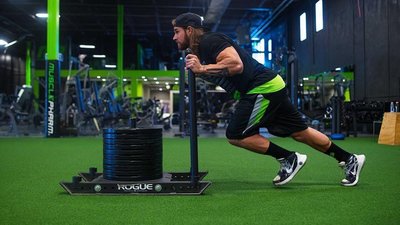Some lifters pay an incredible amount of attention to every facet of what they do in the gym—from selecting the best exercises to goal-focused training protocols and all the minutiae in between—then consider their efforts completed once they walk out the gym door. To achieve results—or more specifically, to optimize them—requires you to treat your post-workout protocol with the same degree of attention as your workout, lest you leave potential gains on the table.
"In my opinion, recovery is the most underrated aspect of the entire muscle-growth cycle," says men's physique competitor Mike Kundla. "Your body needs proper rest and recovery to repair the muscle fibers damaged from training, replenish muscle-glycogen stores, and allow for central-nervous-system recovery."
But according to fitness coach Brandon Strong, that's not the only reason for optimizing recovery. "You want to be as close to 100 percent for your next workout or game, and recovery plays a big role in there as well," he says.
We picked the brains of these two successful MusclePharm athletes, asking about their post-workout routines to identify which recovery strategies are most effective while still allowing each man to hit it hard the next day.
1. Start With Post-Workout Stretching and Cool-Down
Optimizing recovery starts even before you leave the gym following your workout. The first stop: static stretching and cool-down.
Over time, muscles can shorten and become tight unless you address flexibility training. Static stretching can increase a joint's range of motion, which can be of particular importance in reducing the risk of injury.
To fast-track his recovery, Strong stretches for at least 10 minutes post-workout, and utilizes foam rolling on leg days. "I also take a 15-20-minute ice bath after an intense leg workout, which I find helps reduce muscle inflammation," says Strong.
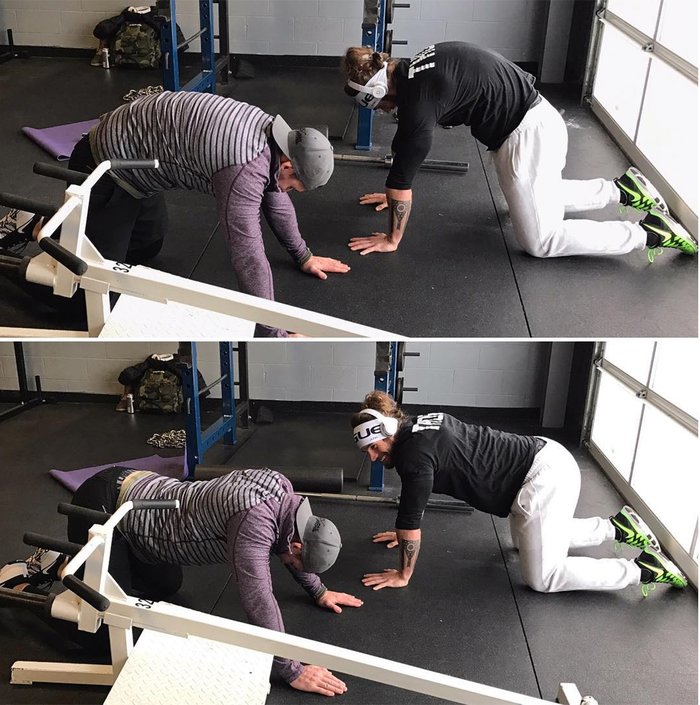
Instagram via 614thor
Kundla isn't much of an Eskimo (though he will ice his knees within an hour of training, to relieve pain from old football injuries), and his recovery protocol changes according to the workout he performs. Some days are power days, where he throws around some fairly heavy weights and supersets multijoint moves like deadlifts and bench presses. Others are accessory days, where he performs single-joint moves like biceps curls and triceps extensions and does his conditioning and cardio work.
"My power days require greater recovery and take more time," he says. "I do a lot of stretching using three pieces of equipment every athlete should include for recovery purposes: a kettlebell, a lacrosse ball, and a foam roller."
On accessory days, Kundla does more traditional-style static stretching. "I also jump rope on these days—100 jumps with both feet, 100 with alternating feet, and 50 reps on each foot individually," he says. "This helps to strengthen the muscles and ligaments in my feet and ankles, which helps reduce injury risk."
Mike Kundla's Power-Day Post-Workout Routine
- 10-15 cat/camel stretches to release tightness in the shoulders and back
- Foam roll hamstrings, quads, and back; alternately you can use a barbell with your legs
- Lacrosse-ball trigger-point work on the hips, shoulders, and calves: 30 seconds of pressure 2-3 times for each area.
- 10-15 bodyweight walking lunges per leg
- 20 arm circles in each direction
- 3-5-minute cool-down on the stationary bike
2. Water Does More Than Keep You Hydrated
Water plays an important role in recovery, and both athletes stress the importance of not only drinking it to stay well-hydrated—which is critical for achieving top-level exercise performance—but for active recovery as well.
"Once a week, I train in the pool for active-recovery purposes, either swimming or running in the shallow end, combined with drills for his hips and legs," says Strong. "The water's resistance helps release tightened muscle tissues, which can be especially effective after a hard leg workout. The cool water also helps normalize my body temperature post-workout."
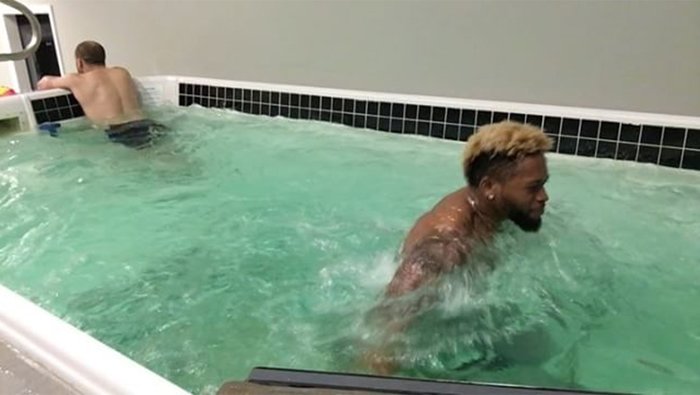
Instagram via bstrongofficial
3. Breaking the Post-Workout "Meal" Into Two Parts
Both athletes take a two-pronged approach to post-workout nutrition that consists of immediate needs and a post-workout meal to boost not just recovery but begin efforts to prepare for tomorrow's workout.
Before exiting the gym, Kundla continues his hydration by adding 1.5 scoops of MusclePharm's Amino1 to a shaker of water. "This gives me a solid combination of BCAAs and glutamine to help speed my recovery time." An hour later, he'll cook up 1.5 cups of egg whites with 1-2 ounces of baby broccoli or greens, or something close to about 40 grams of protein with fewer than 5 each of carbs and fat. "If I'm on the go, I'll mix 1.5 scoops of MusclePharm 100% Combat Isolate with water."
Strong's post-workout support starts with MusclePharm products he can consume immediately: Amino1 with an additional 5 grams of glutamine to help with recovery, and a Combat Crunch Bar, which provides 20 grams of protein and 25 grams of carbs. An hour later, he opts for macronutrient-based foods; his favorite is a protein-heavy burrito bowl.
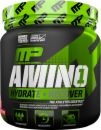
4. Winding Down Before Bedtime
Sleep is oftentimes what gets squeezed first when 24 hours in a day isn't enough. But from a muscle-recovery perspective, that's exactly backward; its role in hormone release and overall recuperation makes sleep one of the most important aspects of recovery. And for both men, it's always a challenge to get enough.
Each one also follows a specific bedtime routine. Kundla starts by soothing sore muscles. "I often use myofascial release at night, and I ice or heat specific areas that are sore or inflamed. "I'll also taper off my water intake, starting around 6, so I don't wake up at night unnecessarily."
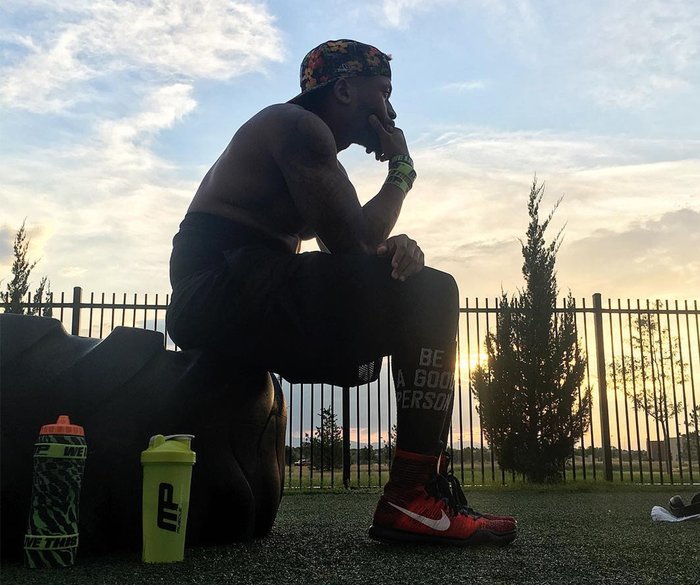
Instagram via bstrongofficial
Strong is keen on a cup of hot tea before bed to promote relaxation, and he supplements with MusclePharm's Z-Core PM, which contains zinc, magnesium, and melatonin to support natural testosterone levels and quality sleep.
Meditation, Strong says, is also effective for winding down from a stressful day, which he does for 10-15 minutes every day. "I started meditation in college as a way to help with stress. I find that quieting my mind and focusing on what I need to accomplish really helps me out."
5. Continue Filling up in the Morning
Most guys think recovery is completed once they hit the hay, but Kundla argues proper post-workout nutrition continues right up until you pick up your first dumbbell. That timespan includes further fueling your body with smart nutrition and supplementation.
Upon waking, Kundla takes an Armor-V multivitamin/mineral with his breakfast. "It has a good balance of vitamins, minerals, and greens, a probiotic complex for immune-system support, and an omega complex that supports cardiovascular health."
Then he's off to the gym. But before he attempts serious weights, Kundla begins with a pre-workout warm-up and mobility routine, which is similar to his post-workout drill but in a different order.
"You should focus on stretching and mobility before your training as well as afterward," he says. "This is just as beneficial to your training as your post-workout routine, helping prevent injury and improving the quality of your training."
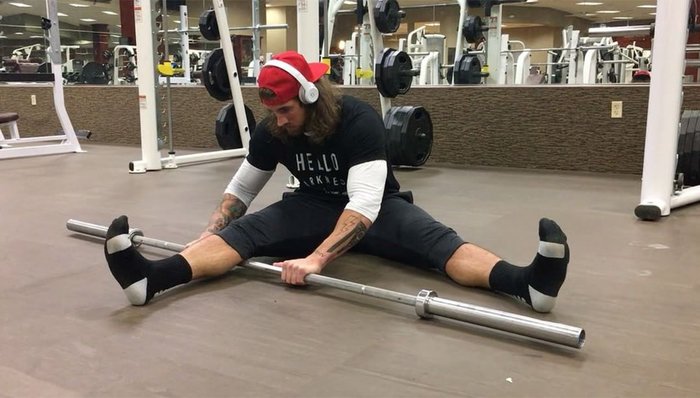
Instagram via 614thor
Mike Kundla's Pre-Workout Mobility Routine
- 3-5-minute warm-up on a stationary bike
- 10-15 bodyweight walking lunges (each leg)
- 10 cat/camel stretches
- 20 deep bodyweight squats
- Foam rolling back and quads; alternately you can use a barbell with your legs
- Stretch and roll out calves with a barbell
- 20 arm circles (each direction)
- Squad smash quads with a 30-pound kettlebell
Strong also believes in continuing recovery into the next day, so immediately upon waking, he starts drinking water. "My saying is, 'Water makes you go harder,'" he says, acknowledging that even a little dehydration can adversely affect the body's performance.
After breakfast, Strong uses another pre-workout tool, MusclePharm's Assault, a pre-workout energy and focus drink. "It gives me the energy to help boost workouts," he says. "I take a scoop with water and drink it either while I'm stretching pre-workout or while I'm running as a warm-up."
He also takes a helping of BCAAs—about 2 scoops—pre-workout to fuel his training and make recovery that much easier by providing his body with important substrates often used during hard training.

